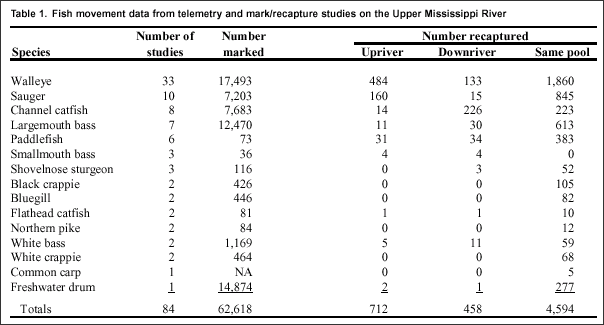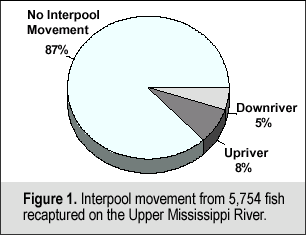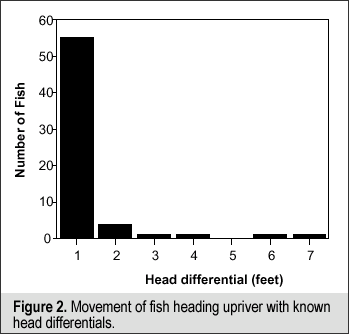|
PSR 96-04 October 1996 Fish Movement on the Upper Mississippi Riverby Joseph H. Wlosinski and Scott R. Marecek |
|
The Environmental Management Technical Center is nearing completion of a two-year project to evaluate the effects of locks and dams on fish passage. As part of this project, we collected all available data from previous fish telemetry and mark/ recapture studies of the Upper Mississippi River (UMR). Other data were obtained from the Wisconsin Department of Natural Resources, Minnesota Department of Natural Resources, Commonwealth Edison, Iowa Department of Natural Resources, Illinois Department of Conservation, Illinois Natural History Survey, U.S. Army Corps of Engineers, Upper Mississippi River Science Center, Normandeau Associates Inc., and Clark Thomas Moen. We found 126 studies that examined fish movement on the UMR. We were able to obtain at least some of the original data from 84 of the studies. |
 |
|
Studies included information for 15 species of fish: black crappie,
white crappie, bluegill, northern pike, common carp, channel catfish,
Less than 10% of the marked fish were recaptured. No black crappie, white crappie, bluegill, northern pike, or common carp were found to have moved across a single lock and dam. Of the 5,253 fish recaptured in the studies we reviewed, 4,594 (87%) remained in the pool where they were initially marked, 420 (8%) moved upriver and 239 (5%) moved downriver (Fig. 1). Some of the fish crossed more than one dam. The majority of the marked and recaptured fish were walleye. Most of the recaptured walleye and sauger that moved across dams did so in an upriver direction, while most channel catfish moved downriver. |
|
|
|
|
|
This report is a product of the Long Term Resource Monitoring Program for the Upper Mississippi River System. For further information, contact Joseph H. Wlosinski
Project Status Reports (PSRs) are preliminary documents whose purpose is to provide information on scientific activities. Because PSRs are only subject to internal peer review, they may not be cited. Use of trade names does not imply U.S. Government endorsement of commercial products. All Project Status Reports are accessible through the Upper Midwest Environmental Sciences Center’s website at http://umesc.usgs.gov/reports_publications/psrs/umesc_psr.html |
Page Last Modified: April 17, 2018


 freshwater
drum, flathead catfish, largemouth bass, paddlefish, sauger, shovelnose
sturgeon, smallmouth bass, walleye, and white bass (Table 1).
freshwater
drum, flathead catfish, largemouth bass, paddlefish, sauger, shovelnose
sturgeon, smallmouth bass, walleye, and white bass (Table 1).  We
also investigated the head differential (HD) between headwa ters
and tailwaters when fish were at large. Unfortunately, we could
not pinpoint the HD for most fish that crossed dams because of the
long periods between when they were marked and recaptured. We do
know, however, the HD for 68 fish. Of these 68 fish, only five crossed
in a downriver direction. Four crossed with a HD of less than a
foot. The fifth crossed when the HD was at six feet. Of the fish
moving upriver, the majority crossed with a HD of less than one
foot (Fig. 2). A HD of around one foot usually signifies that dam
gates are out of the water and open river conditions exist.
We
also investigated the head differential (HD) between headwa ters
and tailwaters when fish were at large. Unfortunately, we could
not pinpoint the HD for most fish that crossed dams because of the
long periods between when they were marked and recaptured. We do
know, however, the HD for 68 fish. Of these 68 fish, only five crossed
in a downriver direction. Four crossed with a HD of less than a
foot. The fifth crossed when the HD was at six feet. Of the fish
moving upriver, the majority crossed with a HD of less than one
foot (Fig. 2). A HD of around one foot usually signifies that dam
gates are out of the water and open river conditions exist.